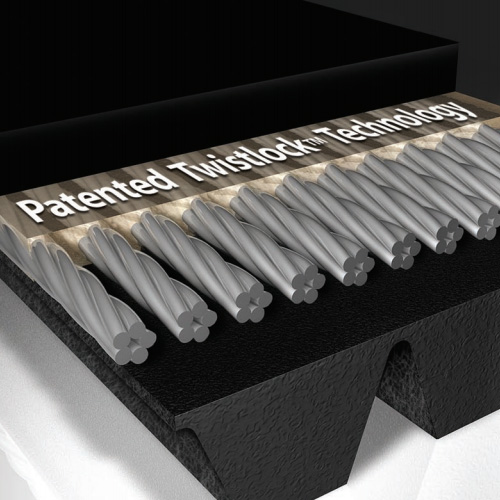
For over 20 years vehicle manufacturers have consolidated accessory drive components onto a single belt. Stretch belts help take the load off of main drive belts, allow more compact accessory drive arrangements and solve some NVH issues that can occur with long serpentine belts. Fewer belts means less tension and less NVH problems.
Applications
If you see a belt on a modern vehicle that doesn’t have an automatic tensioner and runs between only two or three components, it’s probably a stretch belt. Some OE stretch belts will have the words “stretchy” or “stretch” written on the back.
Most vehicles in the Australian market started using stretch belts around 2009, including Ford, Holden, Mazda, Subaru and Toyota.
Lifespan
Stretch belts can last up to 150,000km, but this can vary dramatically depending on the vehicle’s environment and where it is located. This is why inspection is recommended - you cannot simply go by kilometre recommendations.
When a stretch belt exceeds wear specifications, it’s no longer able to effectively grip the pulleys and will start slipping. The primary cause of slipping is actually material being removed from the belt’s grooves, not belt stretching. Over time, small debris and the interaction with the pulleys will wear the shoulders and valleys of the grooves.
When the grooves become too shallow, the pulleys bottom out. When this happens, the walls of the groove are no longer gripping the pulley. Inspecting the depths of the grooves is critical when determining when to replace belts. You should also always replace these belts as a set. Most serpentine belts wear at the same rate as stretch belts and have to be removed to service most stretch belts anyway.
Inspection
When inspecting a stretch belt, always measure the depth of the grooves with an inspection tool such as the Free Gates Belt Wear Gauge since the differences between a worn belt and a good belt can’t be seen or felt. The new materials used to make a stretch belt do not crack before the grooves are worn like older style belts.
Click here to claim your FREE Gates Belt Wear Gauge
Removal
If you are removing an old stretch belt, you can cut it. If the belt is still in excellent shape, you can remove the belt with the correct belt tool in order to reach other components, but it’s highly recommended just to replace the belt if you don’t know the history.
Installation of Stretch Belts
Before ordering a new stretch belt, check the catalog for any additional parts like idler pulleys and special tools. These stretch belts have an elastic core that is designed to keep tension on the pulleys. Stretch belts are designed to stretch over one of the pulleys during installation, usually the crank or the largest pulley.
Never use a screwdriver or other sharp object to install the belt because if the belt is cut or the surface or grooves of the pulleys are damaged, the belt will eventually fail. Special tools are available from various tool and belt manufacturers such as the Micro-V Stretch Fit Belt Installation tool from Gates that act as a ramp on the leading edge of the pulley. These tools cover over 80% of applications, however some applications will require special tools to hold the belt on a pulley, like the SFT002 suitable for Ford Fiesta/Focus, SFT004 suitable for BMW 530d and 91031 suitable for Suburu Forester, Impreza and Outback applications.
Always follow the directions for proper tool placement and to determine the correct direction to turn the crankshaft.
After the belt is installed, always confirm the belt is in the grooves and re-check that there are no alignment problems.
Check out the video below for a step by step run through of replacing a stretch belt.